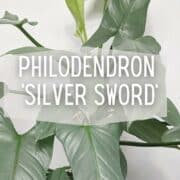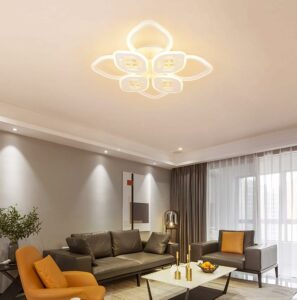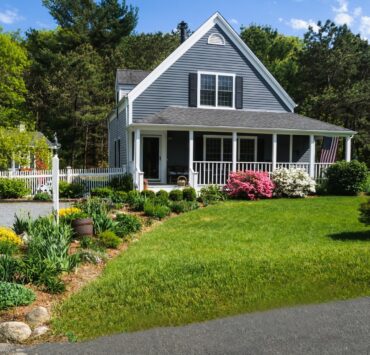When it comes to siding for your home, there are a variety of materials to choose from. Each type of siding material has its own unique set of advantages and disadvantages.
Let’s explore the pros and cons of some of the most popular siding materials.
1- Vinyl Siding
Vinyl siding is one of the most popular siding materials today. It’s relatively inexpensive and easy to install, which makes it a popular choice for homeowners on a budget.
Additionally, vinyl siding requires very little maintenance, a significant advantage for homeowners who don’t want to spend much time or money maintaining their siding.

Pros of Vinyl Sliding:
- Affordable: Vinyl siding is one of the most affordable siding options on the market, which makes it a popular choice for homeowners on a budget.
- Easy to Install: Vinyl siding is relatively easy to install, saving money on installation costs.
- Low Maintenance: Vinyl siding requires very little maintenance, so you won’t have to spend much time or money keeping it looking good.
- Variety of Styles: Vinyl siding comes in a variety of styles and colors, which means you can choose a look that matches your home’s style.
Cons of Vinyl Sliding:
- Limited Lifespan: On average, vinyl siding lasts about 20-30 years. While vinyl siding is durable, it doesn’t last as long as other siding materials.
- Fading: Over time, vinyl siding can fade and become discolored, which can detract from your home’s curb appeal.
- Environmental Impact: Vinyl siding is not the most environmentally friendly siding material, as it is made from petroleum-based products.
2- Fiber Cement Siding
Fiber cement siding is popular for homeowners who want a durable and long-lasting siding material. Made from a mixture of wood pulp and cement, fiber cement siding is designed to withstand harsh weather conditions and resist damage from insects and rot.

Pros of Fiber Cement Siding:
- Durable: Fiber cement siding is incredibly durable and can withstand harsh weather conditions.
- Low Maintenance: Fiber cement siding requires very little maintenance, so you won’t have to spend much time or money keeping it looking good.
- Fire Resistant: Fiber cement siding is fire-resistant, which can help protect your home from a fire.
- Long Lifespan: Fiber cement siding can last up to 50 years or more, which means you won’t have to replace it as often as other siding materials.
Cons of Fiber Cement Siding:
- Heavy: Fiber cement siding is heavy, so it can be challenging to install and require additional structural support.
- Cost: Fiber cement siding is more expensive than vinyl siding, which may not fit every homeowner’s budget.
- Professional Installation: Fiber cement siding is difficult to install and requires professional installation, which can add to the cost.
3- Wood Siding
Wood siding is a classic siding material popular for its natural beauty and versatility. Several types of wood siding include cedar, redwood, and pine.

Pros of Wood Siding:
- Natural Beauty: Wood siding is known for its natural beauty and warmth, which can add to your home’s curb appeal.
- Customizable: Wood siding can be customized to fit your home’s style and aesthetic.
- Renewable Resource: Wood is a renewable resource, which makes it a more environmentally friendly siding material than vinyl or fiber cement siding.
Cons of Wood Siding:
- High Maintenance: Wood siding requires regular maintenance, including painting or staining every few years.
- Expensive: Wood siding is more costly than vinyl siding, which may not fit every homeowner’s budget.
- Prone to Damage: Wood siding is prone to damage from insects and rot, which can require expensive repairs.
4- Brick Siding
Brick siding is popular for homeowners who want a durable and low-maintenance siding material.
Brick siding made from clay or shale is known for its timeless look and durability.

Pros of Brick Siding:
- Durable: Brick siding is incredibly durable and can last for centuries.
- Low Maintenance: Brick siding requires very little maintenance, so you won’t have to spend much time or money keeping it looking good.
- Fire Resistant: Brick siding is fire-resistant, which can protect your home from a fire.
- Energy Efficient: Brick siding is known for its insulation properties, which can help keep your home warm in the winter and cool in the summer.
Cons of Brick Siding:
- Cost: Brick siding is one of the most expensive siding materials on the market, which may not fit every homeowner’s budget.
- Heavy: Brick siding is heavy, so it can be difficult to install and require additional structural support.
- Limited Styles: Brick siding comes in a limited variety of styles and colors, which may not match every homeowner’s style and aesthetic.
5- Stucco Siding
Stucco siding is a popular choice for homeowners who want a unique and textured look for their home’s exterior.
Stucco siding, made from a mixture of cement, sand, and water, can be customized to fit a variety of styles and aesthetics.

Pros Stucco Siding:
- Customizable: Stucco siding can be customized to fit your home’s style and aesthetic.
- Low Maintenance: Stucco siding requires very little maintenance.
- Energy Efficient: Stucco siding is known for its insulation properties, which can help keep your home warm in the winter and cool in the summer.
Cons Stucco Siding:
- Prone to Cracking: Stucco siding is prone to cracking, which can be expensive to repair.
- Cost: Stucco siding is more costly than vinyl siding, which may not fit every homeowner’s budget.
- Requires Professional Installation: Stucco siding requires professional installation, which can add to the cost.
6- Metal Siding
Metal siding is a popular choice for modern and industrial-style homes. It can be made from aluminum, steel, or copper, and can be customized with different finishes and textures.

Pros Metal Siding:
- Durable: Metal siding is incredibly durable and resistant to weather and pests.
- Low Maintenance: Metal siding requires very little maintenance, which means you won’t have to spend a lot of time or money keeping it looking good.
- Fire Resistant: Metal siding is fire-resistant, which can help protect your home in the event of a fire.
- Energy Efficient: Metal siding can be installed with insulation, which can help keep your home warm in the winter and cool in the summer.
Cons Metal Siding:
- Cost: Metal siding can be more expensive than vinyl or wood siding, depending on the type of metal and finish you choose.
- Limited Styles: Metal siding may not be the best choice for traditional or historic homes, as it can look out of place.
- Noise: Metal siding can be noisy during heavy rain or hail storms.
7- Stone Siding
Stone siding is a natural and rustic option that can add charm and character to your home’s exterior. It can be made from natural stone or manufactured stone veneer.

Pros Stone Siding:
- Durability: Stone siding is incredibly durable and can last decades or even centuries.
- Natural Aesthetic: Stone siding adds a natural and rustic look to your home’s exterior.
- Fire Resistant: Stone siding is fire-resistant, which can help protect your home in the event of a fire.
- Low Maintenance: Stone siding requires very little maintenance.
Cons Stone Siding:
- Cost: Stone siding is one of the most expensive siding materials on the market, which may not fit every homeowner’s budget.
- Heavy: Stone siding may require additional structural support to install.
- Limited Styles: Stone siding comes in a limited variety of styles and colors, which may not match every homeowner’s style and aesthetic.
8- Engineered Wood Siding
Engineered wood siding is a composite material made from wood fibers and resin. It is designed to look like natural wood but is more durable and has lower maintenance.

Pros Engineered Wood Siding:
- Low Maintenance: Engineered wood siding also requires very little maintenance
- Durable: Engineered wood siding is resistant to rot, insects, and moisture.
- Affordable: Engineered wood siding is more affordable than real wood siding.
- Customizable: Engineered wood siding can be painted or stained to match your home’s style and aesthetic.
Cons Engineered Wood Siding:
- Limited Lifespan: Engineered wood siding has a shorter lifespan than natural wood siding, typically around 30 years.
- May Require Repainting: Over time, engineered wood siding may require repainting or refinishing to maintain its appearance.
- Limited Styles: Engineered wood siding comes in a limited variety of styles and colors, which may not match every homeowner’s style and aesthetic.
In conclusion, choosing the suitable siding material for your home is an important decision that should be made after careful consideration of all the factors involved.
Consider your budget, style preferences, and the climate in your area when deciding, and work with a reputable contractor to ensure proper installation and maintenance. With the right siding material, you can enhance your home’s curb appeal and value for years to come.








